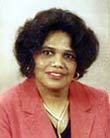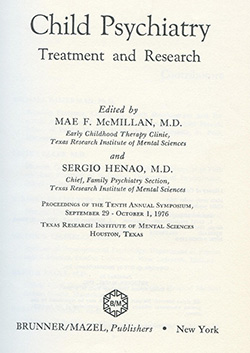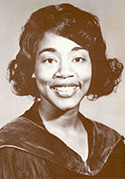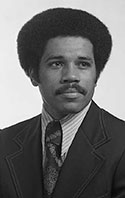Moving Forward (1955-1980, Section 11)
With the changes brought about by federal laws, social protests, and the increased integration of medical school and residency programs, a growing cadre of African-American physicians sought and obtained leadership positions across the broader Houston medical community and in national organizations, while continuing to fight for equality. They offered a complete array of medical services to the increasingly diverse landscape of Houston. By 1970, Houston was the nation’s sixth largest city with a population of 1,232,802. As the nation’s energy capital, Houston welcomed immigrants from across the world.
Dr. Edith Irby Jones, a prominent HMF member and a doctor of national renown, founded her medical practice in Houston’s Third Ward in 1962. A skilled physician who was named president of the National Medical Association in 1985 and honored as the internist of the year in 1988 by the American Society of Medicine, Dr. Jones has dedicated her career to serving those most in need. In the late 1960s, Dr. Jones helped establish Mercy Hospital in southeast Houston to serve impoverished patients living in the area. Dr. Jones also helped build a clinic in Haiti.
Dr. Mae F. McMillan was one of the first African -Americans to finish her residency at the Baylor University College of Medicine in child psychiatry. She completed her training in 1966. During the 1970s, Dr. McMillan served as director of the early childhood therapy clinic at the Texas Research Institute of Mental Sciences, and published a leading text in her field, Child Psychiatry, Research and Treatment (1977). In 1978, she chaired the American Psychiatric Association’s Committee of Black Psychiatrists and worked to increase minority representation in the psychiatric profession.
African-Americans received increasing recognition for their accomplishments from larger professional organizations. Dr. Eula Faye Perry, for example, received an award in 1973 from the Business and Professional Women of Houston, a predominantly white organization.
Dr. Hargrave Wooten, from Jacksonville, Florida, was the first African -American to intern at Houston’s Memorial Hospital. Before completing his degree in ophthalmology at Meharry Medical College, Dr. Wooten also earned a degree in pharmacology from Xavier University in New Orleans. For more than half his career, he was the owner and chief executive officer of the Wooten’s Pharmacy stores chain. From 1966 to1972 he also was a physician at the University of Houston and the CEO of both Physicians Eye Association and Hargrove F. Wooten and Associates.
Dr. Judith Craven became the first African-American woman to graduate from Baylor College of Medicine in 1974, the same year that Dr. Seymour Weaver started his medical training there. Following graduation, Dr. Craven became the chief of anesthesiology for Riverside General Hospital. From 1978 to1980 she also served as the Houston Health Department’s Director of Public Health. The field of public health deals with threats to the overall health of a community, and over time, has shifted from a focus on individual behaviors and risk factors to population-level issues, such as inequality, poverty, education, sanitation systems, or city-wide vaccination programs to halt the spread of contagious diseases.
While many African-Americans continued to break new ground at predominantly white medical schools, others still chose to attend Meharry Medical College in Nashville, Tennessee and Howard University in Washington, D.C., the two historically black institutions that had educated the overwhelming majority of the nation’s African-American doctors before the era of integration.
In 1970, Dr. Natalie Carroll entered medical school at Meharry, where she had been born during her father Dr. Carl Mark Carroll’s training there. Having visited the campus for reunions with her father, she felt connected to Meharry. Meharry was part of her family. She had encountered some racism at an integrated college in Illinois where she received her undergraduate education, and concluded that she was ready to return to a predominately African-American environment. Inspired by her father and the other black physicians she knew growing up in Houston, Dr. Carroll chose medicine as her career. She explains, “I think the practice of medicine is a perfect combination of science and caring and interaction with other human beings.” 1
After completing her residency at the Washington Hospital Center in the nation�s capital, Dr. Carroll returned home and launched her Obstetrics and Gynecology practice in the Third Ward.
Dr. John B. Clemmons, a native of Savannah, Georgia, chose to attend Howard University for medical school after graduating from Williams College. In the late 1960s, Dr. Clemmons had been one of the first African-American students at Williams, a leading liberal arts college, where he and other students staged peaceful sit-ins seeking courses in African-American studies. After receiving his medical degree from Howard in 1975, Dr. Clemmons returned to Georgia to complete his internship, residency, and gastroenterology fellowship at the Emory University hospital. He opened his practice in Houston in 1981 and joined the Houston Medical Forum upon his arrival, later serving as president of the organization.
Citations
- Dr. L. Natalie Carroll, interview by Yimei Zhang, 29 March 2005, Houston, TX, audio recording






